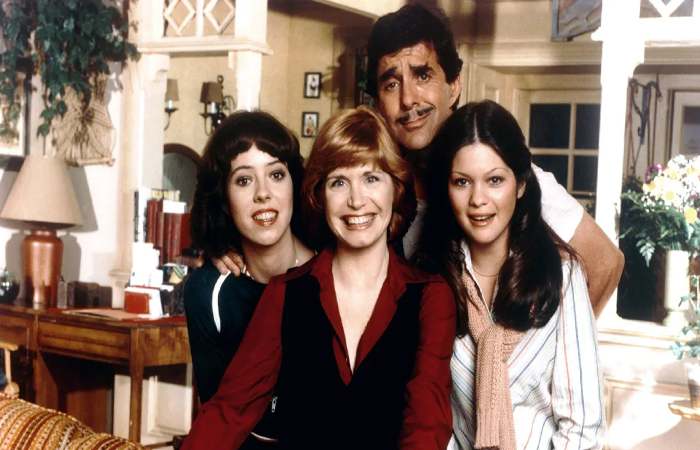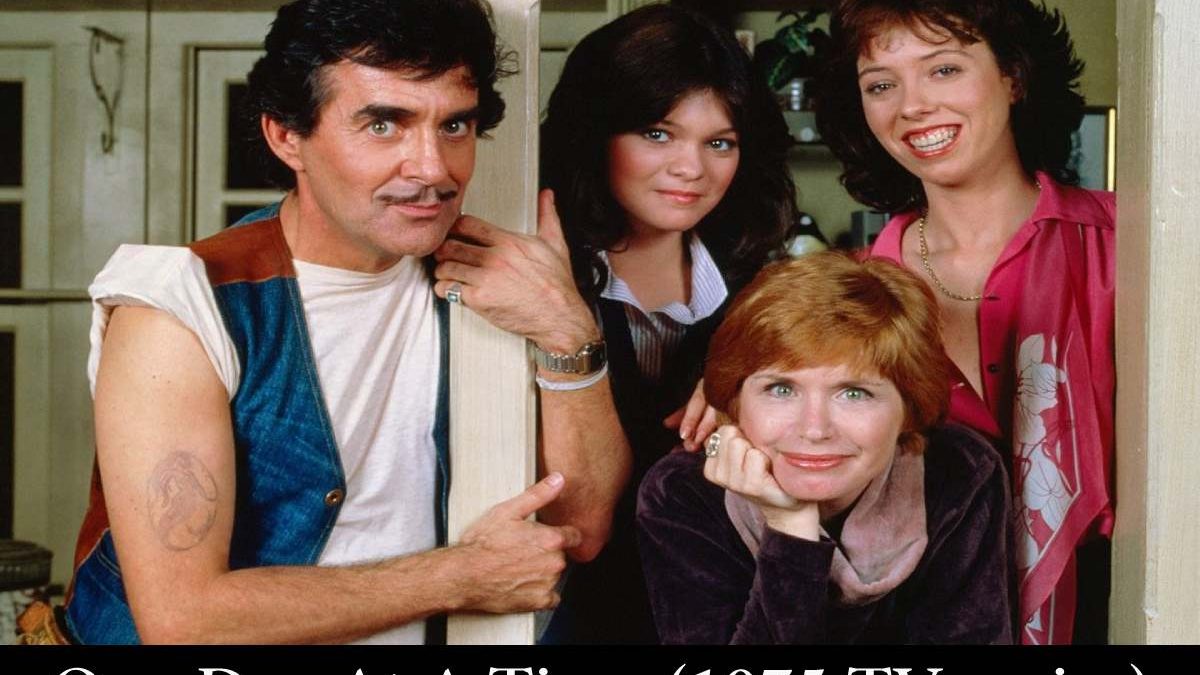Table of Contents
Introduction
One Day At A Time (1975 TV series) In the vibrant television landscape of the 1970s, Norman Lear gifted audiences with the groundbreaking sitcom “One Day at a Time.” So, premiering in 1975, this series embarked on a pioneering journey, capturing the essence of a changing America and the challenges faced by a single mother and her family. Led by the incomparable Bonnie Franklin as Ann Romano, the show artfully blended humor and heart, becoming a beacon for addressing real-life issues within the sitcom realm. As we delve into the world of the Romano family, this introduction sets the stage for a nostalgic exploration of the cultural impact, memorable characters, and enduring legacy that define “One Day at a Time” as a timeless classic in the annals of television history.
Setting the Scene: The American Family in Transition
As the United States underwent societal changes in the ’70s, “One Day At A Time (1975 TV series)” mirrored the shifting dynamics of the American family. Centered around divorcee Ann Romano, played by Bonnie Franklin, and her two children, the series candidly portrays a single-parent household navigating life’s challenges.

Breaking Barriers: Addressing Social Issues
Norman Lear, known for pushing the boundaries of sitcoms, infused “One Day At A Time (1975 TV series)” with a commitment to addressing social issues. The show fearlessly tackled topics such as divorce, teen rebellion, sexism, and the challenges a working single mother faces. It became a platform for discussing real-life issues within the sitcom format through humor and relatable storytelling.
The Romano Family: Endearing Characters and Memorable Performances
At the show’s heart were the characters that endeared themselves to viewers. Bonnie Franklin’s portrayal of Ann Romano showcased resilience and humor in the face of adversity. Mackenzie Phillips and Valerie Bertinelli, as her on-screen daughters Julie and Barbara, added depth to the family dynamic. Pat Harrington Jr., as the charming Schneider, became an iconic character, offering comic relief and friendship.
Legacy of Laughter: Humor as a Coping Mechanism
“One Day at a Time” cleverly blended humor with poignant moments, creating a formula that resonated with audiences. The series used laughter as a coping mechanism, allowing viewers to find solace and camaraderie in the Romano family’s everyday struggles. The show’s humor entertained and provided a therapeutic escape for viewers grappling with similar challenges.
Navigating Relationships: The Impact of One Day at a Time
The Romano family’s relationships within and outside the household offered a relatable reflection of interpersonal dynamics. Ann’s dating escapades, the sibling rivalry between Julie and Barbara, and the unconventional friendship with Schneider contributed to the show’s enduring appeal. The series demonstrated that love and support could be found in unexpected places regardless of family structure.
Cultural Relevance: A Mirror to Society
Beyond its entertainment value, “One Day at a Time” captured the zeitgeist of the ’70s. From the fashion choices to the evolving societal norms, the show became a mirror of the cultural shifts of the era. By embracing diversity and addressing topical issues, it remained relevant and relatable, leaving an indelible mark on the landscape of television history.
Critical Acclaim and Awards: Recognizing Excellence
“One Day at a Time” received critical acclaim for its innovative approach to sitcom storytelling. The performances, writing, and overall impact on television culture garnered several awards, including Golden Globes and Primetime Emmy Awards. This section explores the accolades that celebrated the show’s excellence and lasting influence on the television industry.
Cultural Impact: Beyond the Screen
The cultural impact of “One Day at a Time” extended beyond television screens. The show’s frank discussions about societal issues inspired conversations in households across America. It paved the way for subsequent sitcoms that dared to tackle real-world problems. Contributing to a shift in the television landscape.
Revivals and Reimaginings: Adapting for New Audiences
Decades after its original run, One Day At A Time (1975 TV series). Experienced a revival in 2017, bringing the Romano family into the 21st century. This section explores how the show was adapted for contemporary audiences, maintaining its commitment to addressing social issues while introducing new dimensions to the beloved characters.

A Lasting Legacy: The Enduring Appeal of “One Day at a Time”
The article achieves this by reflecting on the enduring legacy of “One Day At A Time (1975 TV series).” Despite the evolution of television and societal changes, the show’s themes of resilience, family, and humor continue to resonate. The Romano family’s journey remains a timeless narrative that exceeds generations, leaving an indelible mark on the history of sitcoms.
Conclusion:
In conclusion, “One Day at a Time” is a television milestone that transcended the conventions of its time. The show’s relatable characters, humor, and commitment to addressing societal issues left an indelible mark on viewers’ hearts. The Romano family’s journey reflected the evolving American family, offering entertainment and a platform for meaningful conversations. As we revisit the laughter and lessons of “One Day At A Time (1975 TV series)

